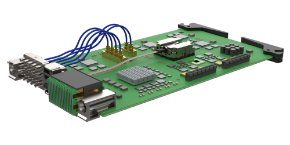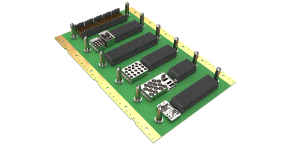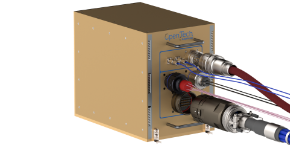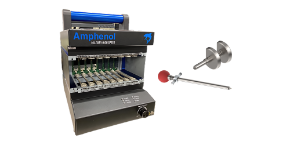In the fast-paced world of military and aerospace technology, the evolution of standards is crucial to meet the increasing demands for higher data rates, reliability, and modularity. The VITA 66 standard is a prime example of how technological advancements are continually shaping the landscape of embedded systems. This blog post explores the journey of VITA 66 from its origins in VITA 46 to its current role in providing advanced optical interconnect solutions.
Origins in VITA 46
The VITA 46 standard, also known as VPX, was introduced to provide a high-performance, ruggedized, and modular open-architecture embedded computing system. It was designed to support high-speed data transfer and robust construction, making it ideal for military and aerospace applications. VITA 46 defined the mechanical and electrical characteristics of VPX modules, enabling the use of high-speed serial fabrics like PCI Express, RapidIO, and Gigabit Ethernet.
The Need for Optical Interconnects
As the demand for higher bandwidth and data integrity grew, the limitations of copper-based connections became apparent. Copper cables, while reliable, were restricted in terms of transmission distance and susceptibility to electromagnetic interference (EMI). This led to the development of the VITA 66 standard, which introduced fiber optic connections to the VPX architecture. Optical interconnects offered significant advantages, including higher bandwidth, longer transmission distances, and inherent EMI resistance.
Introduction of VITA 66
The VITA 66 standard was developed to integrate blind-mate fiber optic interconnects into the VPX systems. This family of standards includes several sub-specifications:
- VITA 66.0: Defines the common mounting interface for fiber optic interconnects within VPX applications.
- VITA 66.1: Utilizes MT (Mechanical Transfer) ferrules, providing high-density fiber connections.
- VITA 66.2: Employs ARINC 801 termini, known for their high optical performance and ruggedness.
- VITA 66.3: Features Expanded Beam (EB) technology, offering extreme durability and easy maintenance.
- VITA 66.4: Combines optical and electrical connections in a single module, enhancing flexibility and functionality.
Advancements and Benefits
The VITA 66 standard brought several advancements to the table:
- High-Density Connections: VITA 66.1 modules can support up to 24 optical fibers, significantly increasing the data transfer capacity within the same physical space.
- Ruggedness: The ARINC 801 and Expanded Beam connectors are designed to withstand harsh environments, making them suitable for military and aerospace applications.
- Flexibility: The modular nature of VITA 66 allows for easy upgrades and maintenance, supporting the evolving needs of embedded systems.
Current Role and Future Trends
Today, VITA 66 plays a crucial role in ensuring reliable and high-speed optical connections in military and aerospace systems. The standard continues to evolve, with ongoing efforts to increase connector density and integrate hybrid RF/optical modules. These advancements are driven by the growing demand for higher data rates and the need for more robust and flexible interconnect solutions(Open.Tech).
Conclusion
The evolution of VITA 66 from VITA 46 highlights the continuous advancements in embedded system standards to meet the ever-increasing demands for higher performance, reliability, and flexibility. By incorporating high-density, rugged, and modular optical interconnects, VITA 66 has set a new benchmark for high-speed data transfer in military and aerospace applications. As technology progresses, VITA 66 will continue to evolve, offering even more advanced solutions to meet the future challenges of embedded systems.










